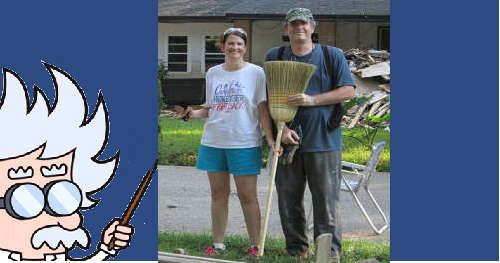By Murray Wennerlund published 1-23-2025 updated 1-23-2025
|
|
|

By Murray Wennerlund published 7-18-2018 updated 7-18-2018

By Murray Wennerlund published 7-18-2018 updated 7-18-2018
OPINION:
When government officials came together in search of a recovery program to help Americans after a disaster they came up with several programs. Over the years since that time many changes have been made and more restrictions put into place.
Most all of the restrictions are needed. It's of my opinion even more need to be added, restrictions that denial future funding based on past funding fraud or mismanagement.
You can even take a percentage of the amount of money that the state was awarded and deduct that amount from all future grants until the mistakes are no longer repeated.
For restrictions we clearly want to focus on HUD national objectives. Simple 3 points to cover.
HUD National Objectives Categories and Subcategories
HUD Responded very rational to the HUD OIG Report.
With comments identifying the issue with the SBA loans by individuals that declined the SBA loan we can see they are clear with their objective.
HUD Comments regarding OIG Report:
Comment 2: The OIG is correct that CPD did not publish the guidance concerning households that declined SBA loans and the award of CDBG-DR assistance as part of the Departmental clearance process. CPD notes that HUD's Directives Handbook 000.2, REV-3 provides that the Assistant Secretaries must ensure compliance with the Handbook, but it also states that the Secretary or Deputy Secretary may exempt an individual HUD Principal from compliance with the Handbook. The guidance was issued to address pressing questions about the eligibility of recovering homeowners and businesses to receive CDBG-DR assistance. While it is unclear whether the Secretary at the time provided a written exemption from the Departmental clearance process for this purpose, the Secretary was briefed on the guidance when it was being developed and was supportive of its publication.
Comment 2: Although the document did not go through the Departmental Clearance process, the guidance was developed in consultation with HUD's Office of General Counsel and the Hurricane Sandy Task Force, established pursuant to Executive Order. CPD also coordinated with the SBA prior to publishing the guidance.
Comment 3: CPD disagrees that the July 25th guidance contradicts its previous guidance included in a Notice published in the Federal Register on November 16, 2011, (76 FR 71040). The Federal Register Notice provided instruction to CDBG-DR grantees on how to prevent the duplication of benefits. In describing the federal government's disaster recovery programs and delivery sequence, the Notice states that SBA loans are among the government's primary and standard forms of disaster assistance, and that CDBG-DR funds should not be used to pay down SBA loans. Because CDBGDR funds are provided through supplemental Congressional appropriations, the funds are intended to supplement rather than supplant SBA assistance. The July 25th guidance clarified the Federal Register Notice by addressing the circumstances under which CDBG-DR grantees could assist households who applied for, but declined, SBA assistance, and the manner in which this can be done.
Comment 4: The November 16, 2011, Federal Register Notice and the July 25th guidance are entirely consistent. A homeowner's decision to decline SBA assistance and a grantee's subsequent award of CDBG-DR funds to that household does not result in CDBG-DR funds supplanting SBA funds. All CDBG-DR grantees must identify the amount and purpose of any disaster recovery funds that a household has received or is expected to receive and determine whether those funds are available. Once a homeowner formally declines an SBA loan, the SBA funds are not available to the homeowner, and the duplication of benefits prohibition in section 312 of the Stafford Act (42 U.S.C. 5155) is not implicated. Therefore, CPD determined at the time that CDBG-DR assistance that is subsequently provided to the homeowner would not supplant the SBA loan that was declined.
